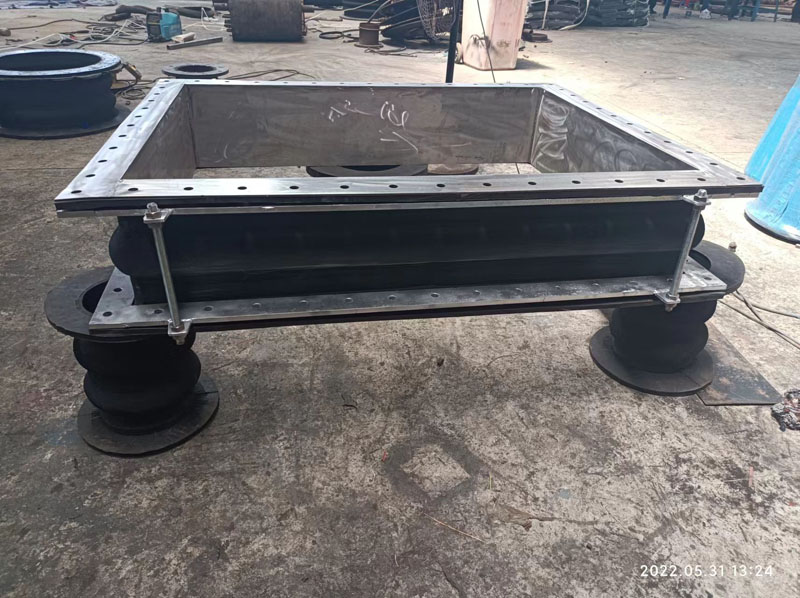


One of the main advantages of using Rubber Soft Connection is the increased flexibility it provides over a hard connection. This can help to reduce noise levels and prevent damage to other components in the system. Another advantage is the way that the rubber material can absorb shocks and vibrations. This can help to increase the lifespan of the connected components, as well as improving operational efficiency.
Some common applications of Rubber Soft Connection include use in piping systems, HVAC systems, and machinery installations. It can also be used in the automotive industry for mounting engines and exhaust systems, and in the marine industry for mounting engines and equipment. Additionally, it is used in power generation and oil and gas industries, as well as in water and wastewater treatment plants.
A hard connection is a fixed connection between two or more components, while Rubber Soft Connection allows for some flexibility. Rubber Soft Connection can also help to reduce noise and vibration, which is not possible with a hard connection. However, a hard connection is often considered to be stronger and more durable than a Rubber Soft Connection. Which connection you choose will depend on the specific needs of your application.
The installation process for Rubber Soft Connection is straightforward. First, the components to be connected need to be aligned and supported in their proper position. Then, the Rubber Soft Connection is inserted between the components, and the bolts are tightened to the recommended torque specifications. It is important to make sure that the Rubber Soft Connection is not over-compressed, as this can lead to premature failure.
Yes, Rubber Soft Connection can be customized to meet the specific needs of different applications. This can include size, shape, durometer, and material composition. Different materials can be used for different applications, such as EPDM for water applications, and Neoprene for oil and chemical applications. Customized solutions can ensure optimal performance and longevity of the Rubber Soft Connection.
In summary, Rubber Soft Connection is a useful type of connector that provides increased flexibility and vibration isolation over a hard connection. It can be used in a variety of applications, and customized solutions can be developed to meet specific needs. It is important to choose the right type of connector for the specific application to ensure optimal performance and prevent premature failure.
Hebei Fushuo Metal Rubber Plastic Technology Co., Ltd. is a leading manufacturer of Rubber Soft Connection solutions. With over 20 years of experience in the industry, we are committed to providing our customers with high-quality products and exceptional service. Our website https://www.fushuorubbers.com/ has more information about our products and services. For inquiries, please contact us at 756540850@qq.com.
1. Liu, Y., Li, J., & Wang, T. (2016). Study on the Vibration Isolation Characteristics of a New Rubber Soft Connection. Journal of Applied Mechanics and Materials, 834, 169-173.
2. Guo, C., & Chen, L. (2017). Numerical analysis of rubber soft connection in vibration isolation systems. Proceedings of the Institution of Mechanical Engineers, Part C: Journal of Mechanical Engineering Science, 231(7), 1323-1333.
3. Tang, B., Liu, W., Lin, J., & Wang, J. (2015). Study on the Dynamic Characteristics of Automotive Engine Rubber Soft Connection. Applied Mechanics and Materials, 746, 87-91.
4. Li, P., Jiao, K., & Xu, D. (2019). Finite element analysis and design of a rubber soft connection used in a marine engine shafting system. Thin-Walled Structures, 136, 85-94.
5. Xiao, J., Li, Y., & Gao, Y. (2018). Study on the Performance of a Coaxial Rubber Soft Connection. Applied Mechanics and Materials, 875, 47-53.
6. Wang, H., Yang, S., & Kang, Y. (2017). Modal analysis and optimization of automobile engine rubber soft connection based on ANSYS. IOP Conference Series: Materials Science and Engineering, 225(1), 012200.
7. Deng, Y., Zhang, J., Qiu, X., & Zhang, X. (2018). Study on the Dynamic Characteristics of a Large-Scale Rubber Soft Connection. Journal of Applied Mechanics and Materials, 895, 70-75.
8. Zhang, X., Zhao, J., Wang, Z., & Hu, X. (2016). Isolation performance research on coaxial rubber soft connections with different rubber materials. Journal of Vibroengineering, 18(7), 4312-4323.
9. Zhang, Z., & Shen, Z. (2020). Design of rubber soft connection used in air conditioning pipe system. Journal of Mechanical Engineering Research and Developments, 43(2), 700-704.
10. Li, F., Zhang, J., & Yin, H. (2017). Experimental and theoretical study on the stiffness and damping characteristics of the rubber soft connection. Journal of Applied Mechanics and Materials, 882, 355-359.